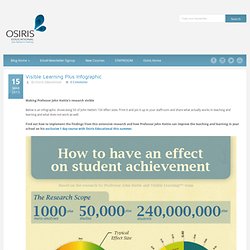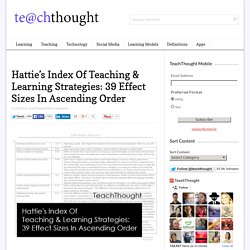

Just shut up and listen, expert tells teachers. John Hattie ... strong advice.

JOHN HATTIE has spent his life studying the studies to find out what works in education. His advice to teachers? Just shut up. Professor Hattie, appointed this year as the director of the Melbourne Education Research Institute at the University of Melbourne, says teachers need to stop spending 80 per cent of their time in class talking and start listening. ''When teachers stop talking deep learning takes place,'' he told a conference of educators at Parramatta yesterday. ''It's our concept of ourselves as teachers that we have knowledge and we need to impart it. Advertisement ''Speaking 80 per cent of the time in conversation means I'm waiting for you to stop to have the chance to talk. What happens next is less clear. ''But I know it's not 80 per cent,'' he told the conference organised by Research Australia Development and Innovation Institute. ''I think it's fascinating that we have a profession where kids come to school to watch us work,'' he said.
Osiris Educational Blog » Visible Learning Plus Infographic. Making Professor John Hattie’s research visible Below is an infographic showcasing 50 of John Hattie’s 150 effect sizes.

Print it and pin it up in your staffroom and share what actually works in teaching and learning and what does not work as well. Find out how to implement the findings from this extensive research and how Professor John Hattie can improve the teaching and learning in your school on his exclusive 1 day course with Osiris Educational this summer. NOTE: You may share this Infographic but you must relink to this page Design and Infographic © 2013 Osiris Educational Woodhall Spa Ltd. Visible Learning Plus is a trade mark of, and is distributed under licence from, Cognition Education Limited. Hattie's Index Of Teaching & Learning Strategies: 39 Effect Sizes In Ascending Order. An Index Of Teaching & Learning Strategies: 39 Effect Sizes In Ascending Order by Dana Schon, sai-iowa.org Effect Size Defined Statistically speaking, the strength of the relationship between two variables.

John Hattie, Professor of Education and Director of the Melbourne Education Research Institute at the University of Melbourne, Australia, says ‘effect sizes’ are the best way of answering the question ‘what has the greatest influence on student learning?’ Effect Size Applied Reverse effects are self-explanatory, and below 0.0Developmental effects are 0.0 to 0.15, and the improvement a child may be expected to show in a year simply through growing up, without any schooling. Effect Size CAUTION. John Hattie: “Think of feedback that is received not given” Teachers switching format of parent conferences : suburban journals branding. For the most part, parents and teachers want their student to be as successful as possible.

Sometimes this is the only issue where the two factions agree. While the goal of success is clear to both parties, the road to this goal is slightly muddier. John Hattie: “Think of feedback that is received not given” Using Data Tip #8: Triangulate, Triangulate, Triangulate. GUEST BLOGGER: Mary Anne Mather, Using Data Senior Facilitator & Social Media Liaison on Twitter & FaceBook All too often state test results may be the only source consulted when targeting specific areas for improvement. However, decisions about instructional changes that reflect only this single data source, might lead to errors in your decision-making. If you want your data to lead you toward making meaningful changes, an important principle to follow, is triangulation.
Triangulation means using three independent data sources to examine apparent issues or problems. You might ask, “Why bother with the extra work of triangulating?” A third-grade teacher asks Mary to look through the front panel of the classroom terrarium and list everything she sees. The notion of using multiple windows or perspectives also applies to understanding and applying information from student achievement data. Triangulation has the following benefits: • It can compensate for the imperfections of some assessments. Welcome to Visible Learning.
Presentation slides - John Hattie - Visible Learning, Tomorrow's Schools, and the Mindsets that make the difference in Education - Treasury Guest Lecture - September 2009. Visible Learning by John Hattie (2009)